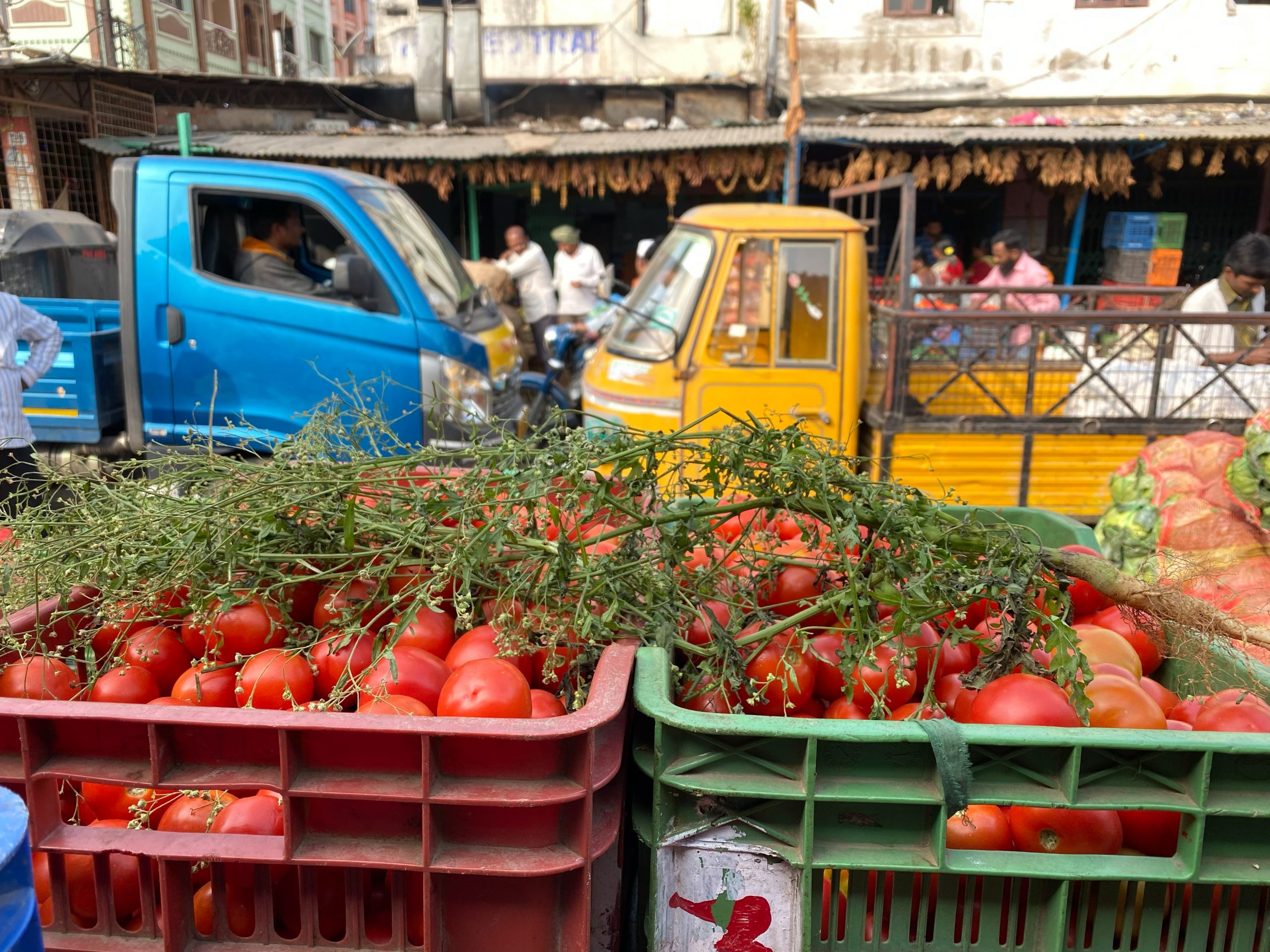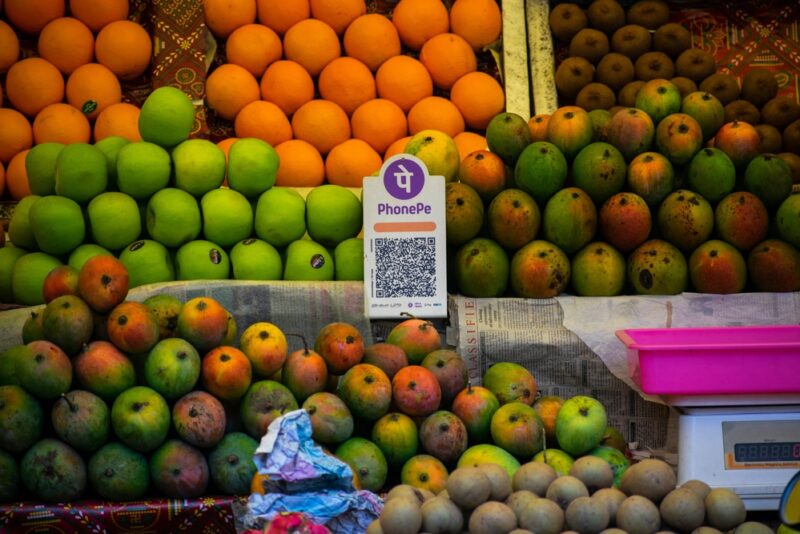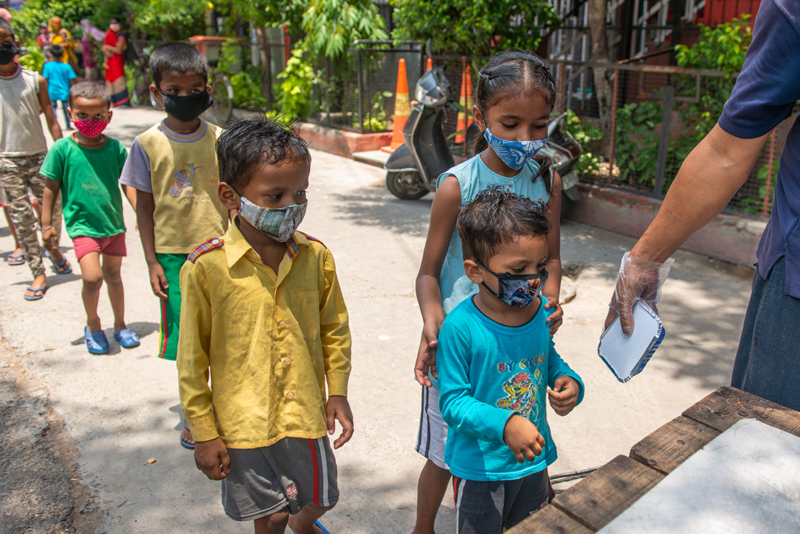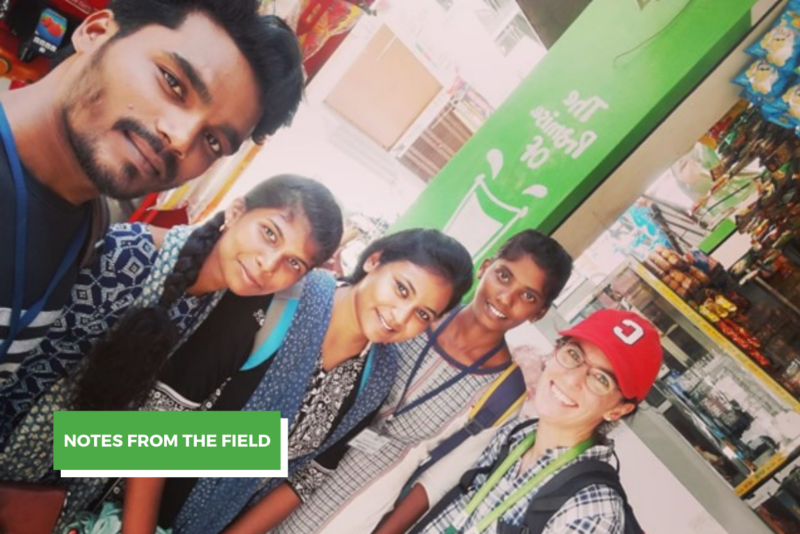Blistering in the Sun: Climate Change Worsens Food Loss for India’s Tomato Farmers

In this blog post, TCI scholar Jocelyn Boiteau details how rising temperatures and unreliable rainfalls are contributing to food loss among India’s tomato farmers.

E. Narasimha Naidu has lost tomato harvests because of sun damage. (Photo by Alphonsa Sony)
Standing in a lush, green field of tomato plants surrounded by swaying trees and rocky hills, experienced farmer E. Narasimha Naidu points to some white spots on the skins of some of the fruit. They are a sign of sun blistering, he explains, a visual defect that can render entire harvests unsellable. It’s a condition that could become more common in India due to climate change.
Fruits and vegetables are important dietary sources of vitamins and minerals. However, the current food system in India does not supply enough of them to meet nutrition recommendations for every person. These nutrient-rich foods are vulnerable to temperature changes, water limitations, and pests and diseases. Altered rainfall patterns and raised average temperatures, which are direct effects of climate change, can reduce agricultural productivity. Given their perishable nature, fruits and vegetables are also particularly susceptible to damage in the field and after harvesting that can be exacerbated by rain and temperature changes.Standing in a lush, green field of tomato plants surrounded by swaying trees and rocky hills, experienced farmer E. Narasimha Naidu points to some white spots on the skins of some of the fruit. They are a sign of sun blistering, he explains, a visual defect that can render entire harvests unsellable. It’s a condition that could become more common in India due to climate change.
Since January 2019, I have been studying food loss of perishable vegetables in Chittoor District, Andhra Pradesh. To do this, tomato farmers are interviewed at their farms on harvest days to understand the quantity and quality losses they encounter at the farm and at the market. Early into data collection, it became clear that rain and sun not only affect how the tomatoes grow but also how they ripen and become market-ready.
Tomato production and marketing is a tricky business; ask any of the farmers in our study. From one field, tomatoes can be plucked a number of times over the harvest season. Weather conditions can drastically impact the quality of tomatoes over an entire season as well as between each harvest. Depending on the type and level of damage, quality loss in tomatoes can interfere with marketability. If tomatoes are too damaged or undesirable, the entire harvest might be lost, a large monetary loss for farmers.
To learn more about farmers’ experiences with tomato loss, our team met with E. Narasimha Naidu, a tomato farmer from Nimmanapalle Mandal, who had had a harvest of his tomatoes rejected at the tomato wholesale market because of poor quality.
Mr. Naidu is no novice farmer. After finishing eighth class in 1968, he began farming the following year, primarily growing paddy (rice) and groundnuts. Starting in 1997, with access to irrigated water via bore wells, he started growing tomatoes. He typically grows tomatoes two seasons per year. This year, during the rabi harvest season, he encountered sun blister damage that worsened over time, resulting in a shortened harvest season on one of his plots.
“When the tomatoes start growing on the vine and because of too much heat, if the sunlight falls directly on the tomatoes, then blisters will form,” Mr. Naidu explains. “In March we can see this more … Almost every year in the same month I face this situation.”
According to Mr. Naidu, white spots on the tomatoes are a visual cue that blisters are beginning to form and the tomato will become soft and undesirable at the market. Soft tomatoes cannot handle packing and transport because they will release juices, spoiling not only themselves but potentially others in the crate.

Sun blisters are a visual cue that the tomato will be soft and undesirable at the market. (Photo by Jyothi Naidu)
Tomatoes that are not marketable often end up as feed for cattle. After one of his recent harvests of tomatoes was rejected at the Madanapalle tomato wholesale market due to sun blister damage, Mr. Naidu decided to stop harvesting the plot altogether. As tomatoes on the vines continued to ripen (and blister), cattle were free to eat them directly off the plant.
Mr. Naidu’s experience with decreasing quality over harvests is not a unique phenomenon. Typically, the early harvests have the best quality, when the plant is young and healthy. Over the course of a season, plants age, are exposed to the elements (rain, sun, pests, and disease), and may incur minor physical damage from repeated harvesting.
One way to prevent sun blisters is to use wooden stakes and twine to help the plant grow so that leaves cover and protect the tomatoes from direct sunlight. The stakes also help prevent the tomatoes from sitting on the soil, which becomes hot from the sun. Mr. Naidu ran into trouble this season because he did not have enough wooden sticks to stake all of his plants.
As temperatures rise, investing in materials and time for staking will become ever more important to avoiding on-field losses. The risk of not making such an investment, and gambling that tomatoes will survive and remain in marketable quality, will only continue to grow.

Tomatoes wait to be sold at market. (Photo by Jocelyn Boiteau)
At the end of our chat with Mr. Naidu, we asked about his plans for the next tomato season. Would he do anything different based on this experience? It was at this time that the issue of water constraints came up. A number of farmers in our study had previously expressed concern about the lack of rain and the impact it had on their tomato production. With changes in rainfall patterns and delays in “good” rains, farmers may decide against planting tomatoes or even abandon plots on which they had already made some production investments.
It has become clear that climate change poses a risk for agricultural production. Nutritious fruits and vegetables that are already in short supply are particularly susceptible to these changes. As farmers experience increasing crop losses and consider abandoning production, the supply gap will only widen.
Over the past year, water scarcity resulted in Mr. Naidu’s bore well running dry. Fearing that the lack of rain will continue, he does not plan to plant tomatoes again anytime soon.
Jocelyn Boiteau is a PhD candidate and a TCI scholar in the Division of Nutritional Sciences at Cornell University. Her research focuses on food loss of perishable vegetables from a food and nutrition security perspective.





